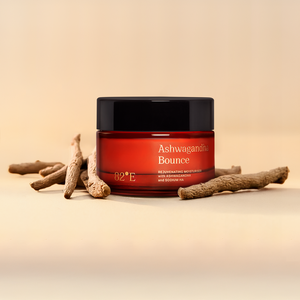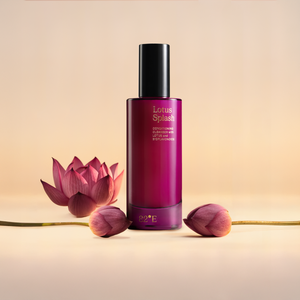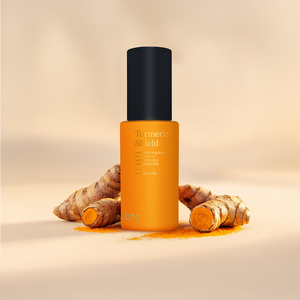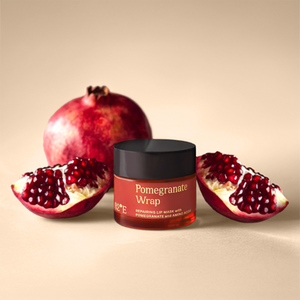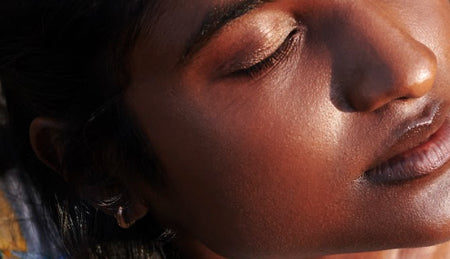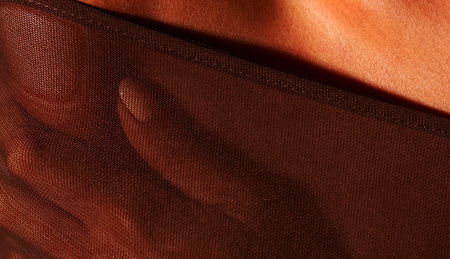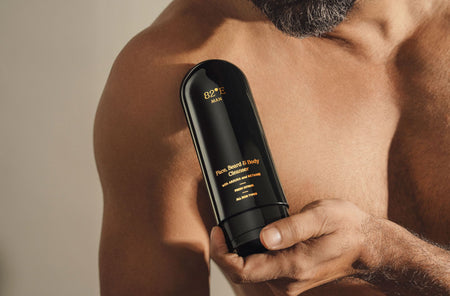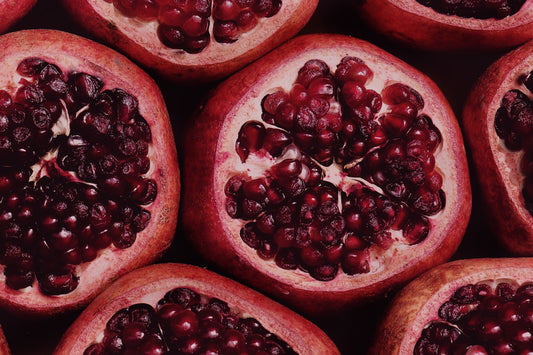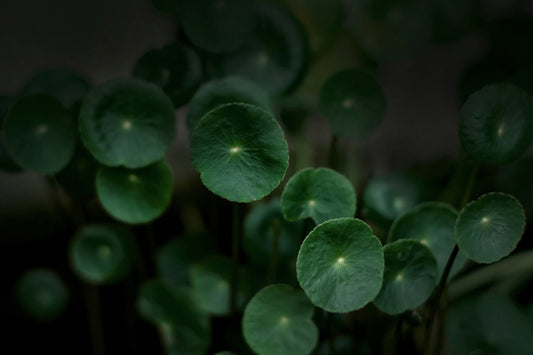
Every day, we expose our skin to myriad impurities: dust, dirt, and makeup. Thus, removing those impurities by cleansing your skin is the first step to retaining and revitalising your skin's health. Cleansing reduces the damaging effects of these stressors and preps your skin for further steps—and that’s why it is the first step of our expert-backed Cleanse, Hydrate, and Protect skincare routine. In this article, we'll delve into the significance of cleansing and why it holds a pivotal role in any skincare routine.
What is Cleansing?
Cleansing removes dead skin cells, oil, dirt and other pollutants from the skin. It is the first step to achieve glowing skin. Cleansing refreshes your skin and helps the skin to breathe.
Cleansing isn't just a ritual; it's the cornerstone of a healthy skincare routine. By consistently cleansing your skin, you're not only removing impurities and maintaining a clear complexion but also setting the stage for all your other skincare products to work effectively.
Why Cleansing is Essential for Skin Health
- Removes Build Up: Cleansing removes the surface build-up of impurities and keeps your pores clean.
- Balances Skin pH: Daily cleansing helps manage the natural pH levels, giving your skin a clean, fresh, and glowing look.
- Balances Oil Production: Overly dry skin can trigger an overproduction of oil as the skin tries to compensate, while oily skin can benefit from removing excess sebum. The right cleanser can help strike this balance for your skin type.
- Improves Product Absorption: Cleansers target pore-clogging debris through gentle removal, prepping your skin for maximum effectiveness and better absorption of serums, moisturisers, and other skincare products.
- Smoothens Skin Texture: Cleansing prevents clogged pores that trap sweat, dead skin cells, sebum, and dirt, preventing uneven texture and acne formation.
- Promotes Skin Renewal: Your skin naturally sheds dead skin cells to make way for new ones. Proper cleansing encourages this process, resulting in a fresher, more youthful complexion.
How to Choose a Cleanser
When choosing a cleanser, listen to your skin and avoid formulas that irritate your skin's protective barrier, and look for the following features:
- Antioxidants: These work in tandem to protect and revitalise your skin, by neutralising skin-damaging free radicals and preventing premature ageing.
- Conditioning agents: These reduce the harshness of cleansers, thus retaining moisture and maintaining a healthy skin barrier.
- Clinically Tested: Clinically and dermatologically tested products show that studies back the product's claims.
- Ophthalmologically Tested: These cleansers won't cause irritation to the eye area and are also safe for use by contact lens wearers.
How to Cleanse Properly
Step 1: Wet Your Face with Lukewarm Water
Begin by splashing your face with lukewarm water. Avoid using hot water as it can strip your skin of its natural oils and cause dryness.
Wetting your face helps to open up your pores, making it easier for the cleanser to penetrate and remove impurities.
Step 2: Apply the Cleanser in Gentle, Circular Motions
Dispense a small amount of your chosen cleanser onto your fingertips.
Gently apply the cleanser to your face using upward, circular motions. Start at your forehead, work your way down to your nose, then out to your cheeks, and finally down to your chin and neck.
Pay extra attention to areas where makeup, sunscreen, or impurities tend to accumulate, such as around the nose and along the hairline.
Be gentle with your skin; there's no need for harsh scrubbing. Massage the cleanser in using light pressure.
Step 3: Rinse with Water
Once you've massaged the cleanser into your skin for about a minute, rinse thoroughly with lukewarm water.
Make sure to remove all traces of the cleanser, as any residue left on the skin can lead to irritation or clogged pores.
Step 4: Pat the Face Dry with a Clean Towel
After rinsing, use a soft, clean towel to gently pat your face dry. Avoid rubbing, as this can cause unnecessary friction and potential irritation.
Ensure your towel is clean to prevent transferring any bacteria or impurities back onto your face.
Important Tips:
- Be Gentle: Remember, the key to effective cleansing is being gentle. Avoid using excessive force or scrubbing too hard, as this can damage the delicate skin on your face and lead to redness and irritation.
- Use the Right Cleanser: Choose a cleanser that suits your skin type. If you have oily skin, opt for a gel or mattifying cleanser. If your skin is dry or sensitive, go for a conditioning or hydrating cleanser.
- Don't Over-Cleanse: While cleansing is essential, doing it too frequently can strip your skin of its natural oils and disrupt its balance. For most people, cleansing once in the morning and once before bedtime is sufficient.
- Adjust for Makeup: If you wear makeup, consider double cleansing in the evening. Start with a makeup remover or micellar water to remove makeup, and then follow with your regular cleanser.
Additional Steps in Your Cleansing Routine
- Face Mask: Face masks are essential to rejuvenate your skin as they deep cleanse and remove impurities from the skin. The process will tighten pores and hydrate the skin. Apply the mask on your face and neck after cleansing, then let it stay for 15-20 minutes. To remove the mask, use warm water and pat dry with a soft cloth.
- Toner: Toning helps lower skin pH and removes dirt and oil. The toning can be done using products such as toner, serums and lotions. Apply toner using a cotton ball after cleansing. Avoid using the toner if your skin’s texture gets dry.
The Difference between AM and PM Cleansing Routines
Cleansing is a fundamental step in any skincare routine, but there are key differences between nighttime and morning cleansing routines:
AM Cleansing Routine
Morning cleansing is essential for refreshing your skin, removing nighttime skincare product residues, and preparing your skin for the day. It has the following advantages:
- Refreshing the Skin: Morning cleansing is about refreshing and preparing your skin for the day ahead. It removes any sweat, excess oil, and dead skin cells that may have accumulated overnight. It also helps you feel more awake and ready to face the day.
- Removing Nighttime Skincare Products: If you applied night creams, serums, or treatments the previous night, morning cleansing removes any residue left behind. This step ensures a clean canvas for your morning skincare routine.
- Sunscreen Application: Morning cleansing is particularly important if you're planning to apply sunscreen during the day. Cleansing removes any leftover products, allowing sunscreen to adhere better to the skin and provide effective protection against UV rays.
PM Cleansing Routine
Cleansing at night is crucial because it not only removes makeup, sunscreen, and pollutants but also sets the stage for your skin's natural repair and regeneration processes. It has the following advantages:
- Makeup and Sunscreen Removal: One of the primary purposes of nighttime cleansing is to remove makeup, sunscreen, and the accumulated impurities from the day. These products, along with pollutants and excess oil, can clog pores and lead to breakouts if left on the skin overnight.
- Deep Cleansing: Nighttime cleansing often requires a more thorough and deep cleansing process, especially if you wear makeup. You may start with a makeup remover or micellar water to break down and remove makeup before using your regular cleanser.
- Skin Repair and Regeneration: While you sleep, your skin goes through a natural repair and regeneration process. Cleansing before bedtime ensures that your skin is free from any barriers, allowing it to absorb night creams, serums, and other treatment products more effectively.
Common Myths Surrounding Cleansing
Many people believe that a cleanser is not effective unless it dries out the skin and leaves it squeaky clean. This is a common myth: a cleanser should retain your skin’s natural moisture while cleaning out impurities.
Several people believe that harsh scrubbing gives deeper cleansing. Cleansing will help remove dirt, but harsh scrubbing may cause irritation and dryness. Always be gentle with your skin when it comes to skincare.
People with all skin types should cleanse daily, ideally using lukewarm or cool water, and follow it up with a moisturiser and sunscreen. This simple routine ensures the skin is regularly cleansed, hydrated and protected from exposure to pollutants and sun damage.
FAQs about Cleansing
Q: I have dry skin. Should I skip the step of cleansing and just wash my face with water?
A: Cleansing is essential even if you have dry skin. You must choose the ideal cleansing products for your skin and keep it hydrated.
Q: What is the correct water temperature to wash your face?
A: Using room temperature or lukewarm water to wash your face is recommended.
Q: Are cleansing wipes good for the skin?
A: No, it's not a healthy option for your skin. You must only use wipes when you don’t have access to water and cleanser. Moreover, cleansing wipes will not effectively remove dirt and impurities from your skin. So, follow proper cleansing once you can.
Q: How often should you cleanse your face?
A: You must cleanse your face twice daily, in the morning and at night. Cleansing after excessive sweating is always recommended.
Q: How is a cleanser different from a face wash?
A: A cleanser is milder than a face wash. The cleanser's texture will be creamy, milky, gel-like, or even watery, whereas the face wash is often foamy or will lather into foam when applied to damp skin.
Our Cleanse Offerings
We have two Cleanse products which have been formulated for different skin types:
- Lotus Splash: This conditioning cleanser comes with the goodness of lotus and bioflavonoids. It is suitable for all skin types.
- Sugarcane Soak: This mattifying cleanser is enriched with sugarcane and mandelic acid. It is suitable for normal and oily skin types.
By following this step-by-step cleansing routine and being mindful of these tips, you'll ensure that your skin is thoroughly cleansed without causing any harm or irritation, setting the stage for a healthy and radiant complexion.

